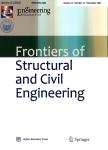Concepts and implementation of strain-based criteria in design codes for steel structures
Concepts and implementation of strain-based criteria in design codes for steel structures作者机构:The Bjorhovde GroupTucsonArizona 85750 USA
出 版 物:《Frontiers of Structural and Civil Engineering》 (结构与土木工程前沿(英文版))
年 卷 期:2012年第6卷第3期
页 面:210-216页
学科分类:08[工学] 080502[工学-材料学] 0805[工学-材料科学与工程(可授工学、理学学位)]
主 题:steel stress-strain characteristics tension test strain design actual behavior improved design codes
摘 要:A uniaxial tension test is commonly used to determine the mechanical properties of steel,but it has no meaning for the response of the material in a *** test was developed as a consensus solution by producers,fabricators,designers and code writers,to have a standard by which similar materials could be compared to a common *** does not represent the actual behavior of the steel in a structure,and was never intended to do *** study the true behavior of the structure and how the material responds it would be better to determine the strains and deformations that will take place during actual service *** characteristics reflect the real behavior,whether in the elastic or inelastic *** stresses or forces are needed,these are easily determined by the value of the strain and the relevant material modulus,along with the type of cross section,whether elastic or *** paper addresses the properties of a range of structural steels,how these are incorporated into design standards and how the standards define deformation characteristics and demands for bolted and welded connections.



